Untold Insights Into the Making of ‘1917’ From its Key Collaborators
Through production design, sound, and picture editing, we learn how these filmmakers pulled off the visual feast behind 1917.
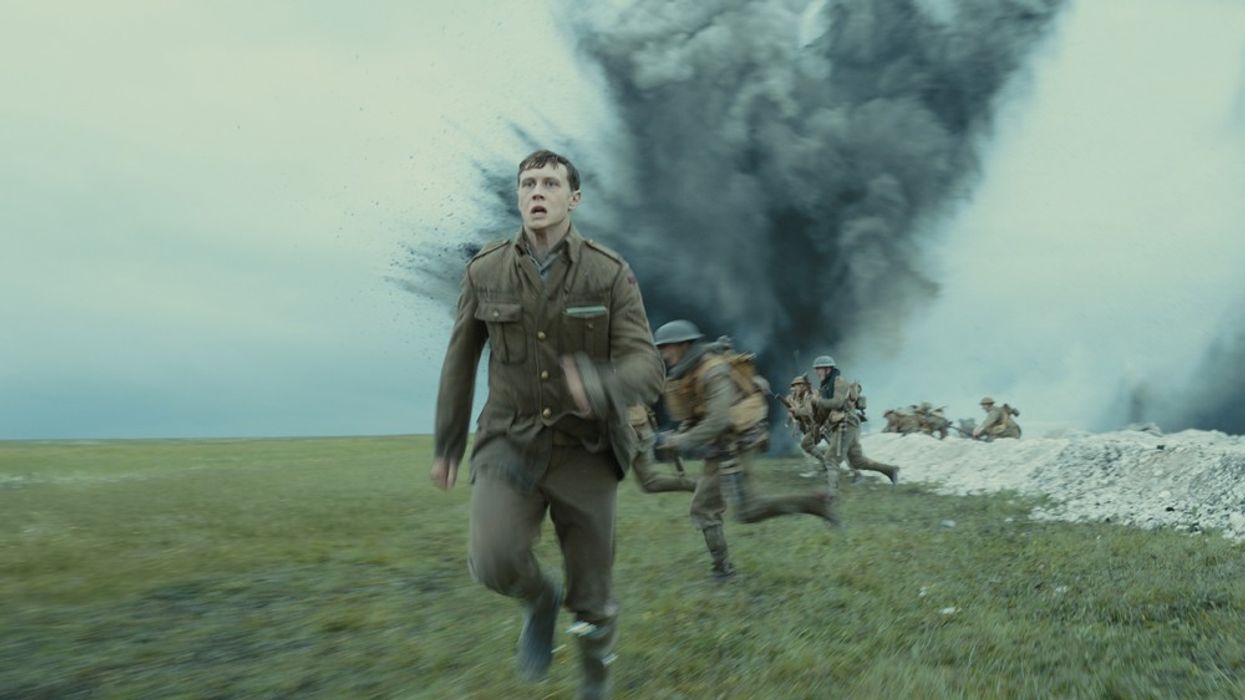
[Note: This article does contain mild spoilers.]
There was a moment while filming Sam Mendes’ 1917 where, in the middle of a three-hour horizontal rainstorm, production designer Dennis Gassner (Skyfall, Blade Runner 2049) looked over to the director and asked him what he was thinking.
His reply, “You know, I kind of like this.”
1917 is a World War I film that follows two British soldiers on their journey to save the lives of hundreds of fellow men. The experience for Gassner was very humbling. “The things we all went through and the way we had to do it; we all felt every moment,” he says. But even before they broke ground(literally), four months of prep and rehearsal were needed to detail the film's visual language – a seamless, “one-shot” connection that follows the action without the appearance of cutting.
The immersive premise is nothing new. Alfred Hitchcock’s Rope comes to mind. It’s marvelously seen in Sebastian Schipper’s Victoria and more recently in Alejandro Iñárritu’s Birdman or (The Unexpected Virtue of Ignorance) and Tuva Novotny’s Blind Spot. Alfonso Cuarón looked to the technique for a climactic sequence in Children of Men, where Clive Owen’s character attempts to flee a building under attack.
When cinematographer Roger Deakins initially spoke to Mendes about the concept, he wasn’t sure about it. “I tend to think those things can be a gimmick, but when you read the script [co-written by Mendes and Krysty Wilson-Cairns] you get a sense of the motion and how it pulls the audience in. I think it was a really good choice for this film.”
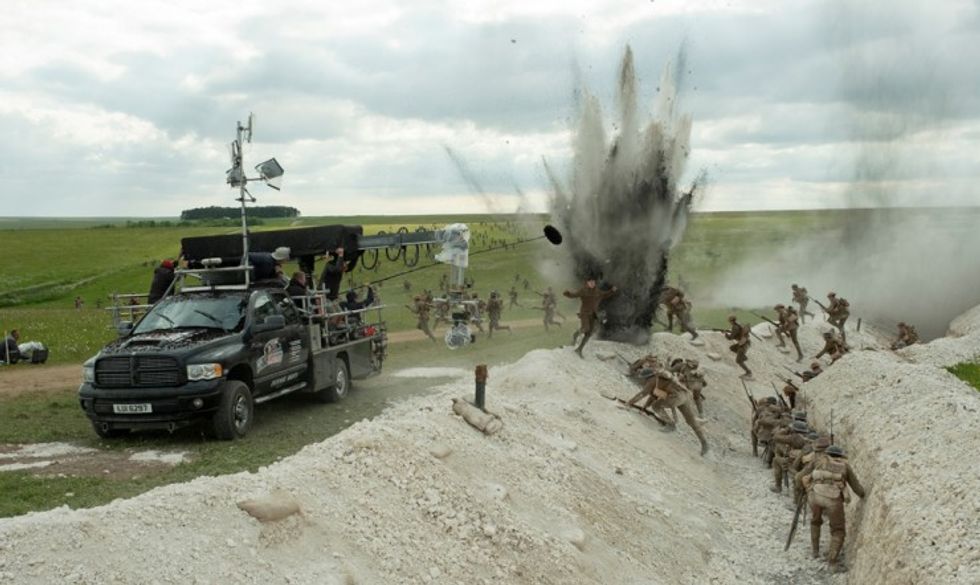
After the timing, pace, and composition for each sequence was figured out, Gassner was able to build the sets to match. A challenge for the production designer included 5,200 feet of trenches that were dug out at Bovingdon and Salisbury in England to mark the Allied forces. And it wasn’t just a hole that needed to be tunneled. Gassner sought to detail the individual living spaces of each soldier along the frontline, even going as far as creating a unique look for the mud in the film. “We wanted to create an environment that had an emotional journey… one with a slightly altered state” says Gassner. “Everything was so unique in how we constructed it and none if it actually existed, so everything was all of the mind.”
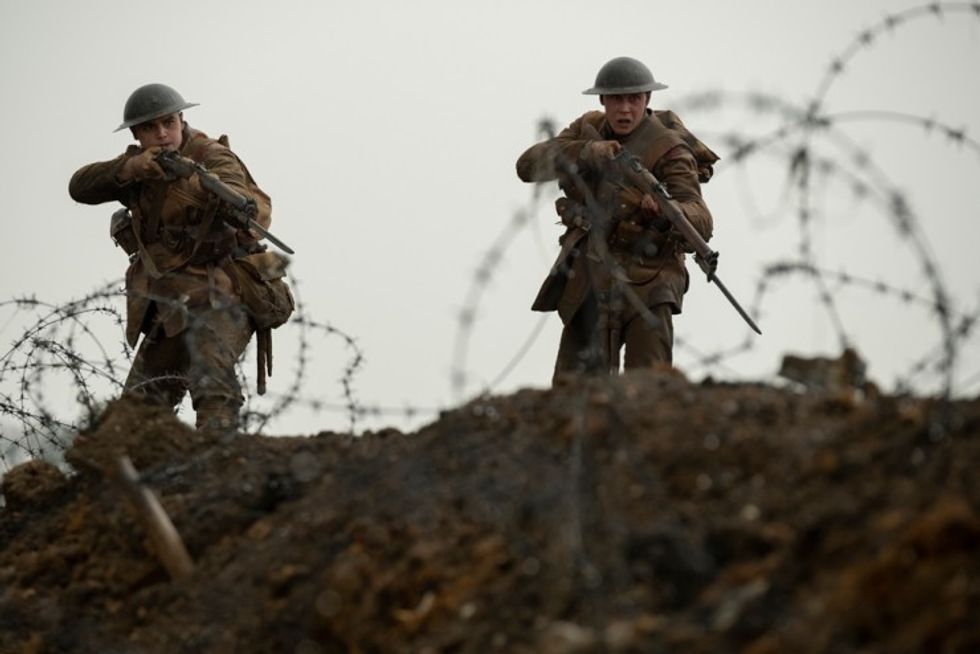
Production sound mixer Stuart Wilson (Skyfall, Star Wars: The Rise of Skywalker) extended the perspective through his recordings. “Because it’s a personal film to Sam [the script echoes stories his grandfather told him of being a runner during WWI] he wanted sound to fuse our connection with the characters,” says Wilson. What it meant for the sound mixer was finding creative ways to record the dialog, footsteps, and each breath so there would be no need for additional dialog recording (ADR) in post.
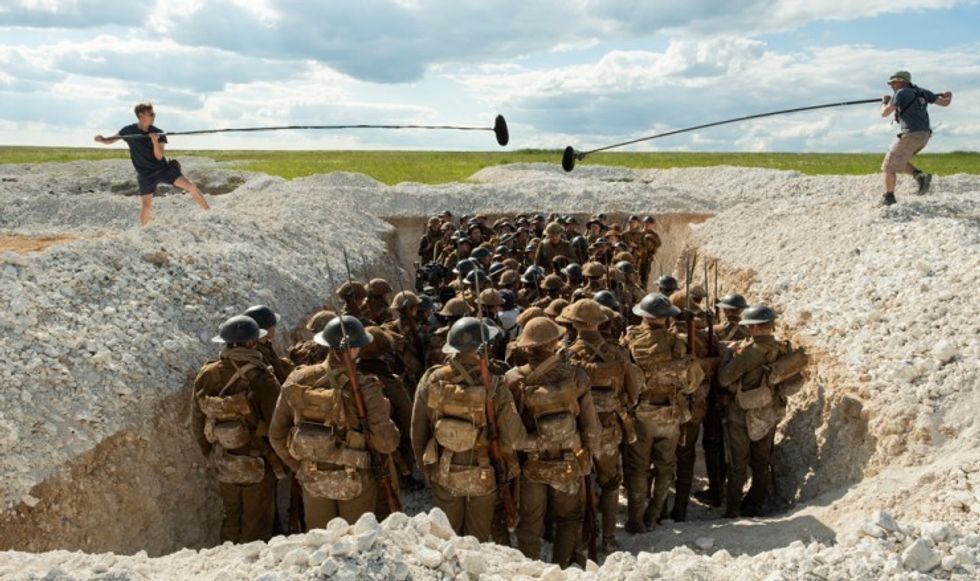
Since the camera would see everything, Wilson hid hundreds of meters of fiber optic cable inside the trenches and concealed the wireless antenna network inside sandbags used to protect soldiers from incoming fire. And it wasn’t only the recordings Wilson had to be tuned to. He also needed to send the audio out to key departments including the director, camera, and script supervisor to make sure they could hear the dialog and thus know when to transition within the shot.
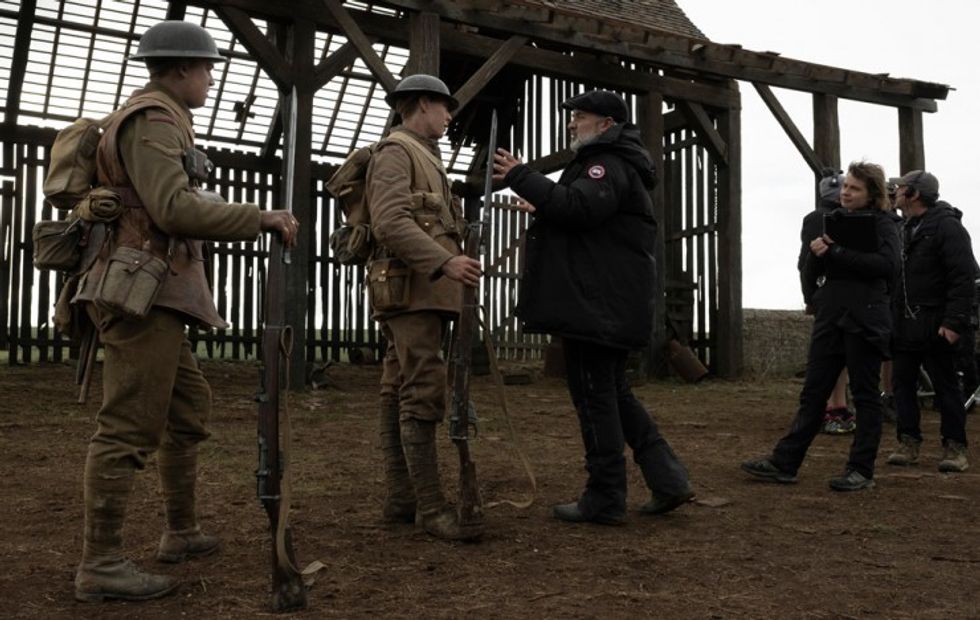
One key takeaway in speaking with the crew behind 1917 is that open collaboration is a must. No matter how big or small a project is, letting those around you share their input can improve a story. When speaking with Deakins, he normally is very forthcoming about technical details, but in this film, he held back the exact precision behind each shot. Hopefully, we’ll be able to explore the complexities of the production in the coming months. Until then, enjoy it for yourself as it opens in theaters December 25.












